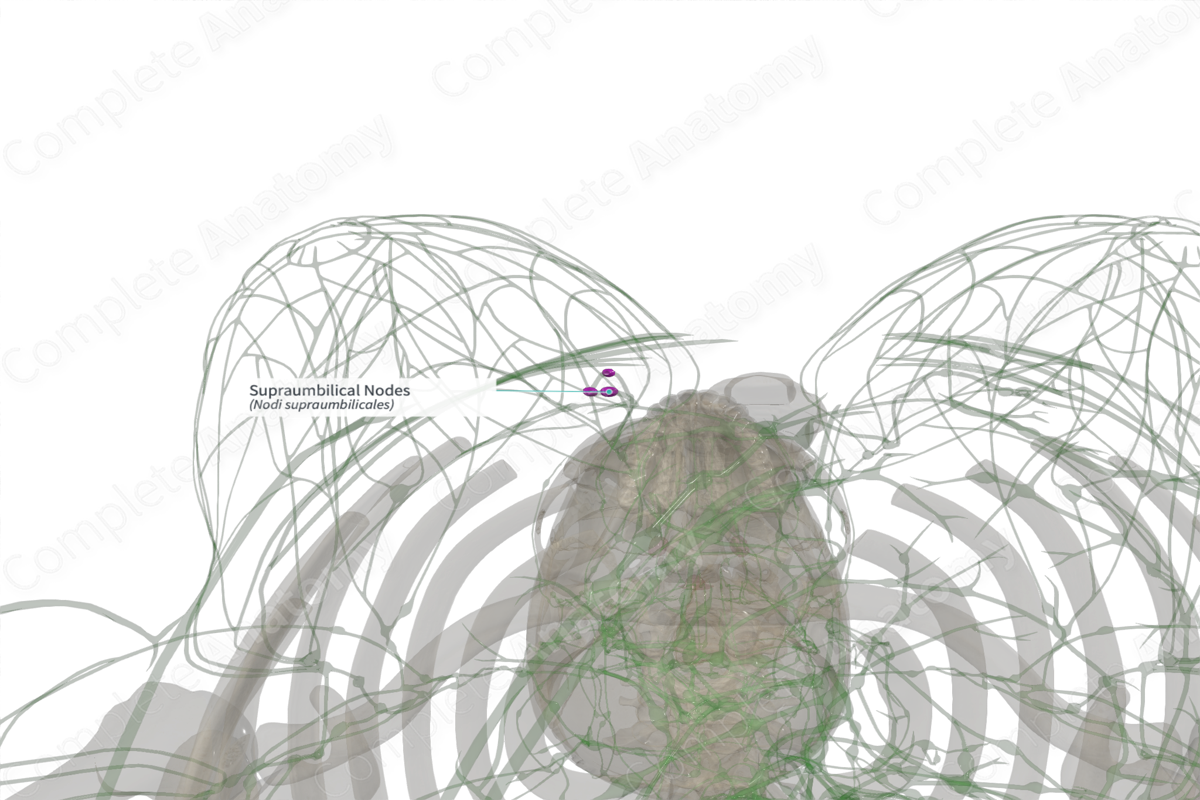
Quick Facts
Location: Above the umbilicus in the rectus sheath.
Drainage: Abdominal wall above the umbilicus.
Direction of Flow: Parasternal nodes > bronchomediastinal trunk > Right lymphatic duct or thoracic duct.
Description:
Description: (Location & Drainage)
The supraumbilical nodes are part of the deep lymphatic nodes of the upper abdominal wall and are part of the superior epigastric pathway. They are found above the umbilicus, either within the rectus sheath or behind the parietal peritoneum, and accompany the superior epigastric veins (Földi et al., 2012).
The supraumbilical nodes send efferent vessels called the superior epigastric vessels superiorly leading to the parasternal nodes. The parasternal efferent vessels usually unite with the paratracheal lymph vessels, thus forming the bronchomediastinal trunks, which drain into the right lymphatic or thoracic ducts.
References
Földi, M., Földi, E., Strößenreuther, R. and Kubik, S. (2012) Földi's Textbook of Lymphology: for Physicians and Lymphedema Therapists. Elsevier Health Sciences.
Description:
Description: (Location & Drainage)
The supraumbilical nodes are part of the deep lymphatic nodes of the upper abdominal wall and are part of the superior epigastric pathway. They are found above the umbilicus, either within the rectus sheath or behind the parietal peritoneum, and accompany the superior epigastric veins (Földi et al., 2012).
The supraumbilical nodes send efferent vessels called the superior epigastric vessels superiorly leading to the parasternal nodes. The parasternal efferent vessels usually unite with the paratracheal lymph vessels, thus forming the bronchomediastinal trunks, which drain into the right lymphatic or thoracic ducts.




